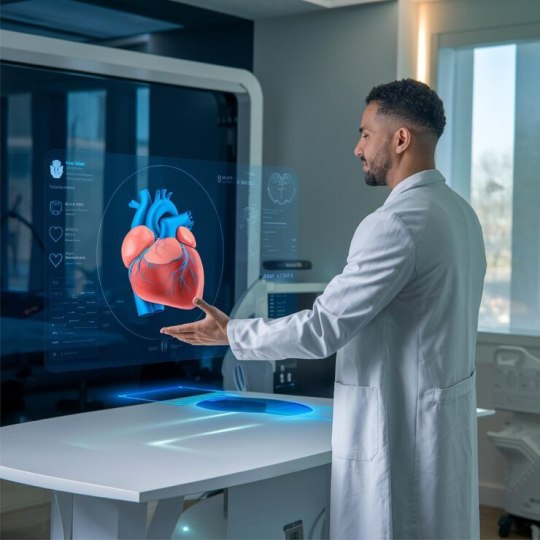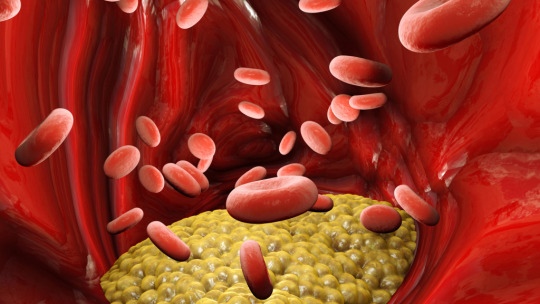#CardiovascularDiagnostics
Explore tagged Tumblr posts
Text
Cardiovascular Diagnostics Market Drivers Accelerating Growth with Innovation and Preventive Health Focus
The cardiovascular diagnostics market is witnessing significant growth due to an increasing global burden of heart-related diseases and the growing need for early detection. With heart diseases being a leading cause of death globally, there is a heightened focus on diagnostic accuracy, speed, and accessibility. A wide range of technologies—from electrocardiograms to advanced molecular diagnostics—are being leveraged to meet this demand. This article explores the key drivers propelling the cardiovascular diagnostics market forward.

Rising Prevalence of Cardiovascular Diseases One of the most compelling drivers of the cardiovascular diagnostics market is the alarming rise in cardiovascular diseases (CVDs). According to the World Health Organization, CVDs account for nearly 17.9 million deaths annually, making up about 32% of all global deaths. Factors like sedentary lifestyles, poor diets, tobacco use, and increasing obesity rates are contributing to this surge. Consequently, there is a strong push for timely diagnosis, leading to increased demand for both invasive and non-invasive cardiovascular diagnostic tools.
Growing Geriatric Population The aging population is another crucial driver. Elderly individuals are more prone to cardiac disorders such as arrhythmia, heart failure, and ischemic heart disease. As global life expectancy rises, so does the pool of at-risk patients. The geriatric population is expected to double by 2050, further driving the need for accurate, efficient, and accessible diagnostic solutions tailored to older adults. Portable and home-based monitoring devices are gaining popularity among this group, promoting market expansion.
Technological Advancements in Diagnostic Tools Continuous innovation in diagnostic technologies is also fueling the growth of the cardiovascular diagnostics market. Modern tools such as 3D echocardiography, cardiac MRI, CT angiography, and biomarker testing have revolutionized how cardiovascular issues are diagnosed and monitored. These advancements offer higher accuracy, real-time data, and more patient comfort, which enhances clinical decision-making. Furthermore, AI integration in diagnostics allows for better predictive analytics, reducing diagnostic errors and improving patient outcomes.
Preventive Healthcare and Early Diagnosis Another key market driver is the shift toward preventive healthcare. Governments and healthcare institutions are emphasizing the importance of early detection and risk assessment to minimize disease progression and reduce treatment costs. Cardiovascular diagnostics are central to this strategy, enabling clinicians to identify risk factors and intervene before acute events like heart attacks or strokes occur. Health checkup packages and heart health screening camps are becoming more prevalent, particularly in urban centers.
Rising Healthcare Expenditure and Infrastructure Development Increased healthcare spending across both developed and emerging markets is facilitating the adoption of advanced diagnostic systems. Many countries are investing in modernizing their healthcare infrastructure, including hospitals and diagnostic laboratories. In regions like Asia-Pacific and Latin America, rapid urbanization and growing awareness are leading to higher diagnosis rates. Public-private partnerships are also enabling wider reach of cardiovascular screening services in remote and underserved areas.
Favorable Government Policies and Reimbursement Support Supportive regulatory frameworks and favorable reimbursement policies are additional drivers helping expand market penetration. In countries like the U.S. and Germany, health insurance coverage for cardiovascular screenings makes diagnostic services more affordable and accessible. Government campaigns promoting heart health, as well as public health initiatives aimed at reducing non-communicable diseases, are fostering a conducive environment for growth.
Adoption of Point-of-Care and Wearable Diagnostics The increasing acceptance of point-of-care testing and wearable devices is another noteworthy trend. These tools offer the advantage of continuous monitoring and immediate results, reducing hospital visits and enabling proactive care. Devices such as portable ECG monitors, smartwatches with heart rate and rhythm tracking, and handheld ultrasound devices are seeing widespread adoption. This mobility and convenience are particularly appealing to tech-savvy and health-conscious consumers.
Private Sector Investments and Research Collaborations Private investments and research collaborations are accelerating product innovation and commercialization in the cardiovascular diagnostics sector. Major healthcare companies are partnering with tech firms and research institutions to develop next-generation diagnostic platforms. Funding in startups and small enterprises working on non-invasive and AI-based diagnostic technologies has surged, contributing to a highly competitive and dynamic market landscape.
Conclusion The cardiovascular diagnostics market is being strongly driven by the convergence of multiple forces including rising disease incidence, demographic shifts, technological progress, and policy support. As the global health landscape evolves, the demand for efficient and accessible cardiovascular diagnostic solutions is expected to grow. By addressing these key drivers, stakeholders in the healthcare ecosystem can better meet the needs of both patients and practitioners, ultimately contributing to improved cardiovascular health outcomes worldwide.
0 notes
Text
Lipid Testing Market to Thrive Amidst Market Growth
The lipid testing market encompasses a broad range of diagnostic assays and analytical services designed to measure blood lipid levels, including cholesterol, triglycerides, HDL, and LDL. These tests support early detection of cardiovascular diseases and guide therapeutic interventions, offering high accuracy and rapid turnaround times. Advances in lipid testing platforms such as automated analyzers, point-of-care devices, and high-throughput mass spectrometry have enhanced sensitivity, reduced sample volumes, and improved workflow efficiency. The growing prevalence of metabolic disorders, coupled with rising health awareness and preventive healthcare initiatives, has amplified demand for routine lipid profiling.
Get More Insights on Lipid Testing Market https://www.patreon.com/posts/lipid-testing-is-130849405

#LipidTestingMarket#AdvancedLipidomics#CardiovascularDiagnostics#MetabolicDisorderTesting#CoherentMarketInsights
0 notes
Text
Advancements in Intracardiac Echocardiography (ICE) and Intravascular Ultrasound (IVUS): Forecast 2024-2033
Intracardiac Echocardiography (ICE) and Intravascular Ultrasound (IVUS) technologies are poised for significant advancements over the next decade, revolutionizing cardiovascular diagnostics and interventions.
As we look ahead to 2033, ICE and IVUS systems will integrate advanced imaging modalities, enhanced catheter designs, and artificial intelligence algorithms to provide detailed visualization of cardiac structures and coronary arteries. These innovations will enable more precise guidance during complex procedures such as ablations, device placements, and coronary interventions, ultimately improving patient outcomes and safety in cardiology.
#IntracardiacEchocardiography #IntravascularUltrasound #CardiovascularDiagnostics #CardiacImaging #MedicalTechnology #HealthcareInnovation #FutureTech #AIinHealthcare #Cardiology #HeartHealth #CoronaryInterventions #SurgicalProcedures #HealthTech #MedicalDevices #InnovativeMedicine
0 notes
Text
Cardiovascular Diagnostics Market Driven by Aging Population and Technological Advances in Early Disease Detection
The cardiovascular diagnostics market is witnessing significant growth driven by a confluence of medical, technological, demographic, and policy-related factors. As cardiovascular diseases (CVDs) continue to dominate global morbidity and mortality charts, the need for timely, precise, and non-invasive diagnostic methods has become paramount. This growing demand is being propelled by a range of influential market drivers.

1. Rising Global Burden of Cardiovascular Diseases
A primary driver of the cardiovascular diagnostics market is the increasing prevalence of cardiovascular diseases globally. According to the World Health Organization (WHO), CVDs account for nearly 17.9 million deaths annually, representing 32% of all global deaths. Conditions such as coronary artery disease, stroke, and hypertension are rising sharply due to sedentary lifestyles, poor diets, and growing rates of obesity and diabetes. This has increased the need for early detection and monitoring, leading to heightened demand for diagnostic tools like echocardiograms, electrocardiograms (ECGs), cardiac biomarkers, and advanced imaging modalities.
2. Aging Population
The global population is aging, with the number of individuals aged 60 and older projected to double by 2050. Cardiovascular diseases are more prevalent in older adults, making aging a significant driver of diagnostic demand. Elderly patients often require continuous monitoring and follow-up for heart-related conditions, increasing the uptake of diagnostic services in hospitals, clinics, and home healthcare settings.
3. Technological Advancements in Diagnostic Tools
Technology is reshaping cardiovascular diagnostics. Innovations such as wearable cardiac monitors, AI-enhanced imaging, 3D echocardiography, and high-sensitivity troponin tests are improving the accuracy, speed, and accessibility of diagnosis. These advancements facilitate earlier detection of CVDs, enabling timely intervention and better outcomes. For instance, artificial intelligence is being used to interpret ECGs and imaging results faster and more accurately than traditional methods. Portable and smartphone-compatible ECG devices are also bringing diagnostics to remote and underserved regions, expanding market reach.
4. Growing Adoption of Preventive Healthcare
Governments and healthcare providers are increasingly focusing on preventive healthcare to reduce long-term treatment costs and improve population health outcomes. This shift is encouraging routine cardiovascular screenings, especially for at-risk populations. Preventive diagnostics not only help identify asymptomatic patients but also monitor progression in those with pre-existing conditions. Health insurance providers and wellness programs are also incentivizing regular check-ups, fueling the demand for diagnostic tools.
5. Increasing Investments and Funding
Governments, healthcare organizations, and private companies are heavily investing in cardiovascular research and diagnostic innovation. Public-private partnerships and funding grants have facilitated the development and commercialization of new diagnostic modalities. Additionally, major players in the medical device industry are expanding their cardiovascular diagnostics portfolios through mergers, acquisitions, and collaborations, thereby enhancing the accessibility and variety of diagnostic options.
6. Integration of Telehealth and Remote Monitoring
The post-COVID-19 era has catalyzed the integration of telehealth and remote diagnostic technologies. Cardiovascular patients can now use wearable devices that continuously monitor heart rate, rhythm, and other vital parameters, transmitting real-time data to healthcare providers. This capability not only enhances patient convenience and compliance but also enables clinicians to detect abnormalities early and intervene quickly. Remote diagnostics are especially crucial for rural or mobility-impaired populations, opening new avenues for market expansion.
7. Expanding Healthcare Infrastructure in Emerging Markets
Emerging economies such as India, China, Brazil, and several African nations are rapidly expanding their healthcare infrastructure, improving accessibility to diagnostic services. As governments in these regions prioritize universal health coverage and chronic disease management, investments in diagnostic equipment and trained personnel are rising. Additionally, a growing middle class with increased health awareness and disposable income is contributing to higher demand for advanced cardiovascular screening and diagnostics.
8. Favorable Regulatory Environment
Supportive government policies, expedited approval processes for innovative diagnostic devices, and standardization of clinical guidelines are fostering a conducive environment for market growth. Regulatory agencies like the FDA, EMA, and others are increasingly approving non-invasive and point-of-care cardiovascular diagnostic devices, encouraging innovation and accelerating their adoption in clinical practice.
9. Personalized and Precision Medicine
The move toward personalized medicine is encouraging the development of diagnostic tools tailored to individual genetic profiles and risk factors. Cardiogenomics and biomarker-based testing are enabling clinicians to design customized treatment plans, especially for complex cardiac conditions. This trend is expected to drive demand for sophisticated diagnostic platforms capable of detailed molecular and genetic analysis.
Conclusion
The cardiovascular diagnostics market is being shaped by a powerful combination of demographic trends, technological innovation, and shifting healthcare priorities. As the burden of cardiovascular diseases escalates globally, the market is poised for continued growth, driven by advancements in diagnostic technology, increased access to care, and a greater emphasis on early detection and prevention. Companies operating in this space have a unique opportunity to cater to a growing and urgent need for accurate, accessible, and efficient cardiovascular diagnostics.
0 notes